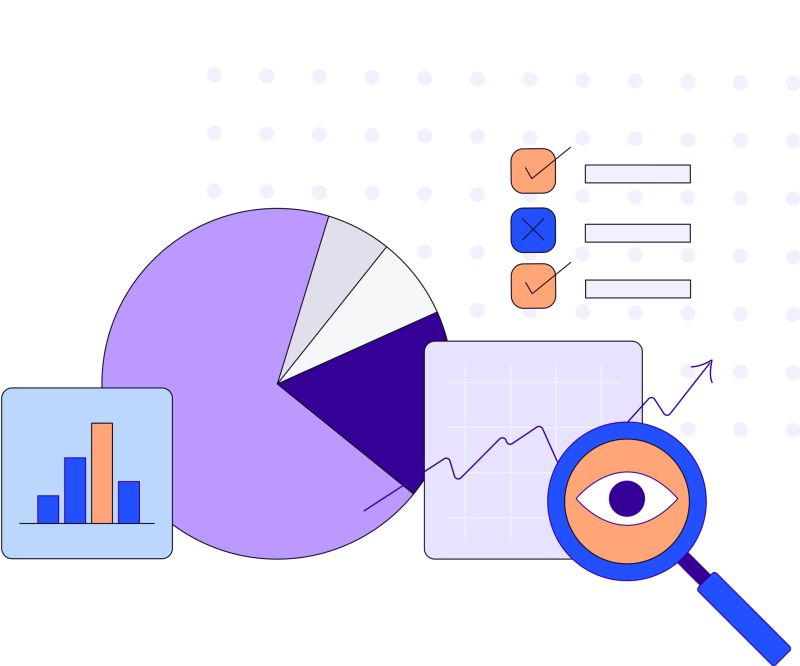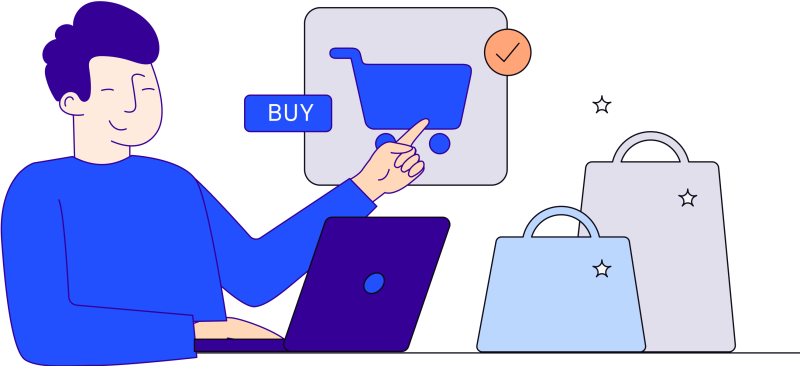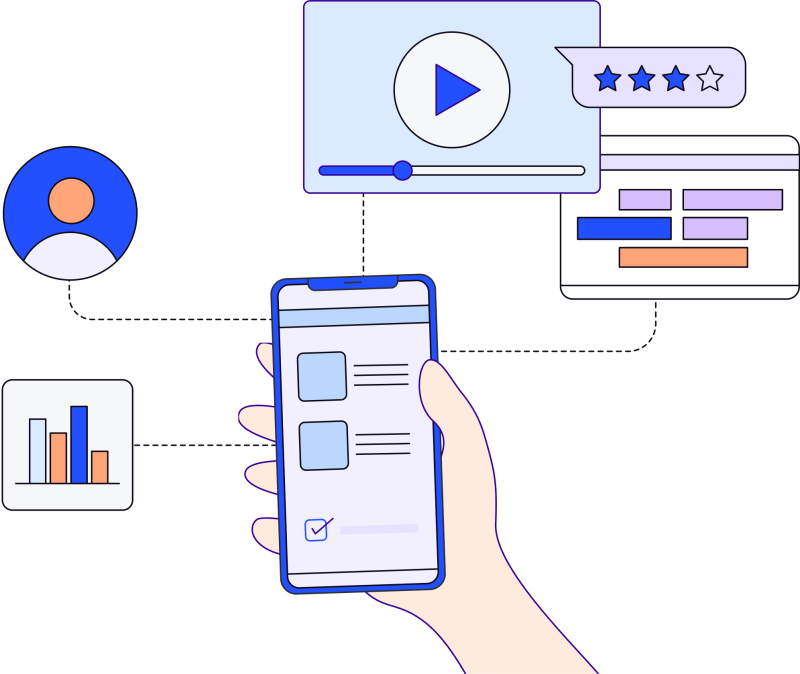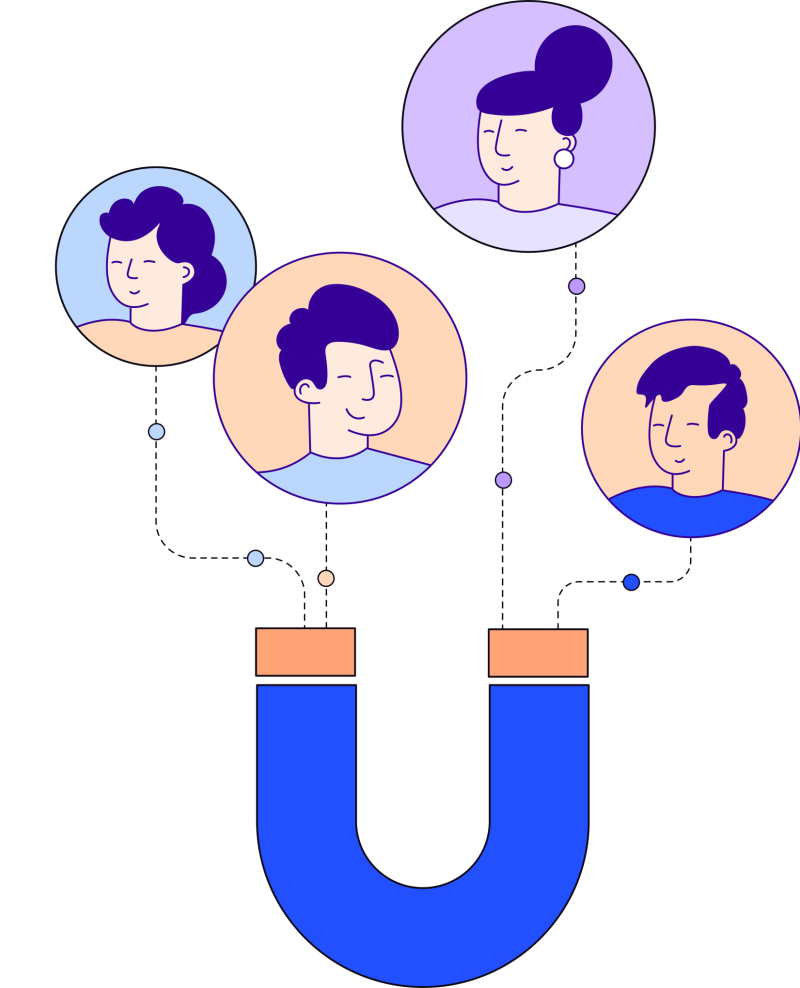Singing in the shower. Indulging in overpriced lattes. Staying up too late watching stand-up comedy on YouTube: Users — They’re just like us!
Though you have things in common with the people who interact with your product, that doesn’t mean you fully understand how they use your product. Build your product assuming you know what they need and, well, you know the rest.
Arguably the most important part of building a product is understanding your user. After all, if you don't know who you're designing your product for, how can you be confident in what you’re building in the first place?
To know (and therefore build) what your users truly crave, you need a customer journey map. This tool takes you through the complete cycle of your user’s experience as they click, scroll, type, and swipe through your product. It’ll illuminate what’s working and what’s not so you can dive in, fix it, and build better.
Tracking your customer journey doesn’t just help you build a smarter product. It moves design sprints along quicker, fosters a confident team mentality, and ensures your product resonates.
5 Stages Of The Customer Journey and Preventing Dropoffs
A customer journey map takes a look at where your users begin interacting with your product. It tracks what they do as they move through the funnel and can give you answers as to what’s making them convert — or bail.
Speaking of bailing, there are reasons your users could jump ship at any time. We’ve gone ahead and given you your best bet to safeguarding against those who want to leave your product too soon. The customer journey can be distilled into five main stages.
![]()
Discovery/Awareness This is when the user first learns about your product. Whether they find it in the app store or see their favorite influencer share a link. Dropoff saver: convince your potential user that you’re the best in the biz. Put your competitive advantages front and center, for example through a comparison chart highlighting your product with others in the space.

Research/Consideration You’ve hooked your user with your competitive advantage comparison chart and good looks. Now, they’re thinking seriously about whether your product fits what they’re looking for. Dropoff saver: Try out different conversion rate optimization ideas. Remove extraneous designs, add an FAQ, or run some A/B tests.

Purchase/Sign-up You’ve won a new user! They’re moving further along in their journey with your product by converting: either purchasing your services or signing up. Dropoff saver: Tout the benefits of using your product. Use social proof to incite FOMO. Or, offer a free trial with no strings attached.

Use/Experience The bulk of your user’s journey lives here. This is when they engage with your product and take advantage of your features to solve their problem. Dropoff saver: Ramp up customer service here. Add a chat feature or easy ways to reach your CX team so if users ever encounter an issue, they’ll know where to go. Build a community by offering user forums. They can help with user-to-user problem solving.

Bond/Loyalty Hooray! You’ve nurtured your user to become a brand loyalist. They’re coming back again and again. You did something right! Ideally, this is where your user becomes an evangelist for your product or service, telling their friends and leaving glowing reviews in the app store. Dropoff saver: If you haven’t already, add notifications to your app to remind your users why they love you. Offer rewards or perks for reviewing your product, or for remaining loyal for a certain amount of time.
Customer Journey Mapping Prep: Planning the Best Route for Your Product
When it comes to choosing how best to visualize your customer journey map, you have options! Most digital products today no longer have a linear journey; users may take a cyclical, or multi-channel approach. This means visualizing how your users move from the awareness stage to the loyalty one is important if you truly want to understand their specific journey.
Are infographics up your alley? Great! Illustrations and diagrams more your speed? You set the pace. Even spreadsheets and sticky notes on a whiteboard are fair game.
What’s Your Type? Customer Journey Map Styles to Fit Any Product (Plus Mapping Tools)
There’s no one-size-fits-all way to map out your customer’s journey. In fact, there are many different ways to do it. For a little inspiration and how to identify the perfect flow for your product, use our handy guide and get mapping!
One thing’s for sure: You should never start mapping your customer journey in a silo. Your teammates and stakeholders have valuable perspectives and insights that could add context and color to your map. And while more than one point of view is necessary, be sure not to cast too wide a net. This may dilute the top issues that are in dire need of improvement. The perfect number is between three and six stakeholders.
And, in case you’ve been wondering if a customer journey map is the same as a customer experience map. The former, your customer journey map, focuses on your users’ experience with your product. A customer experience map focuses on a “typical” experience, regardless of whether or not your product is involved.
For example, a customer journey map would follow a user as they learn a new language through Duolingo. A customer experience map would follow a generic experience of learning a new language. The devil is in the details: Specificity is what separates the two.
9 Simple Steps to Creating Your Product’s Customer Journey Map
Ready to start understanding your users better? Here’s how to get it done in nine easy steps.
Gather data. Harness the power of user testing and your qualitative and quantitative analytics to get the facts to start building your map. To get a well-rounded view, make sure to include users at all different stages of using your product. Ask questions like: What are they looking for? Why did they leave? How frequently do they use your product? Which features are the most or least popular?
Create user personas. Narrow down who your users are by segmenting them into cohorts like age, gender, profession, financial and educational status, marital and family status. Then, figure out the problems and motivations for each group.
Define the problem. Identify the main problems your users are coming to you with. What are you trying to solve?
Visualize the journey. Depending on the style that fits your product the best, start laying out your user’s journey. Define how to sketch out each stage in columns. Then, add definers that will help you key in on the specific problems you’re trying to solve for in rows. Definers are usually split up into:
Channels — Where touchpoints happen, like social media ads, mobile apps, forums, or call centers.
Touchpoints — A user's specific need, like signing up, onboarding, finding a product, checking out, or asking for help.
Actions — The actions the user takes at each stage of the journey. Be sure to take it straight from the user themselves (not what you think/assume of the user).
Motivations — Why is the user taking those actions?
Thinking — Figure out what the user might be thinking as they go through those actions.
Feeling — Channel the user's emotions during these actions.
Proposed changes — This is somewhat optional, as you may not always have changes to make. But consider what you might change to improve this experience at each stage.
Define key highlights and pain points. Find what your users are loving, and what they’re not. This gives you better insight into what to focus on refining and building upon.
Hypothesize changes and improvements. Based on what you lay out in your highlights and pain points, theorize what can be tweaked and upgraded.
Prioritize and execute. Elevate the most pressing issues and what you’ll focus on working on first.
Ready, set, launch! Congrats on making it this far, now get ready for takeoff!
ABCJM. Always be customer journey mapping! Your users are human. They’re going to evolve and change. And, your pool of users is (ideally) going to grow. That means to stay fresh and competitive, always be customer journey mapping!
Thwarting dropoffs and making your users feel like you’re in their heads is all in a day’s work. But only if you use your customer journey map as your guide when you build your product. Until then, keep singing in the shower — and try the matcha latte.





